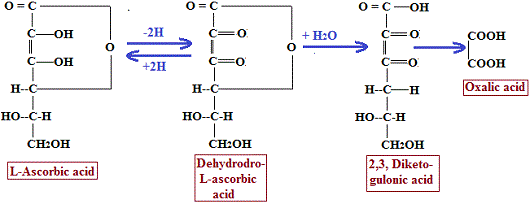Vitamin C (Ascorbic Acid) - Occurrence and Changes to it in Body
It is the L-ascorbic Acid which is Vitamin C in man and the Isomer D-ascorbic acid is biologically inactive. Vitamin C is water soluble, white, crystalline, odorless substance with a sour taste. It is destroyed by oxidation and exposure to air especially in the presence of Fe or Cu ions. Alkalies also destroy it and therefore its absorption is decreased in achlorhydria. Ascorbic Acid is not a vitamin for the vast majority of animals because they can synthesize this substance in vivo from glucose. Man and other primates, guinea pig and some other species cannot make ascorbic acid in their bodies and for this reason this substance is a vitamin for them.
 Occurrence of Vitamin C
Occurrence of Vitamin C
Fresh fruits and vegetables are efficient sources of vitamin C; animal tissues are not a good source. Citrus fruit and tomatoes are the best sources. Other sources are green peppers, onions, spinach, cabbage, turnips, melons and potatoes. Milk is deficient in it, though human milk is richer (5 to 7 mg/100ml) than cow’s milk (1.0 to 2.6 mg/100ml). One once of orange juice has about 25 mg of ascorbic acid which is sufficient for the daily need of an infant.
 Changes Undergone by Vitamin C in the Body
Changes Undergone by Vitamin C in the Body
Ascorbic Acid is oxidized to oxalic acid, two intermediate compounds being dehydroascorbic acid and 2,3, diketogulonic acid. Dehydroascorbic acid possesses the activity of vitamin C. These changes are shown below:

It can be seen from above that ascorbic acid can undergo oxidation to dehydroascorbic acid which can then be reduced to re-form ascorbic acid. This property enables ascorbic acid to take part in many oxidation-reduction reactions in tissue cells.




